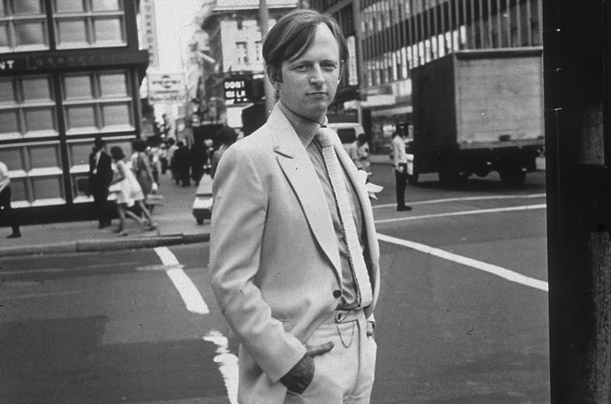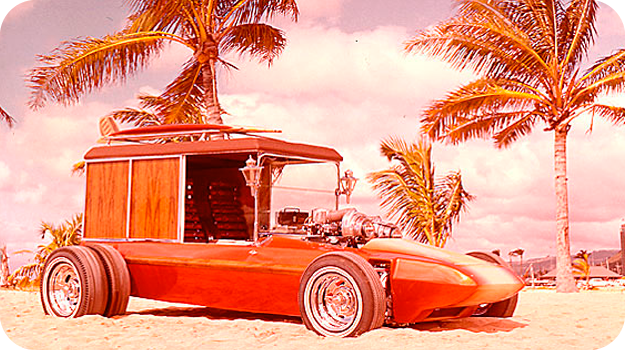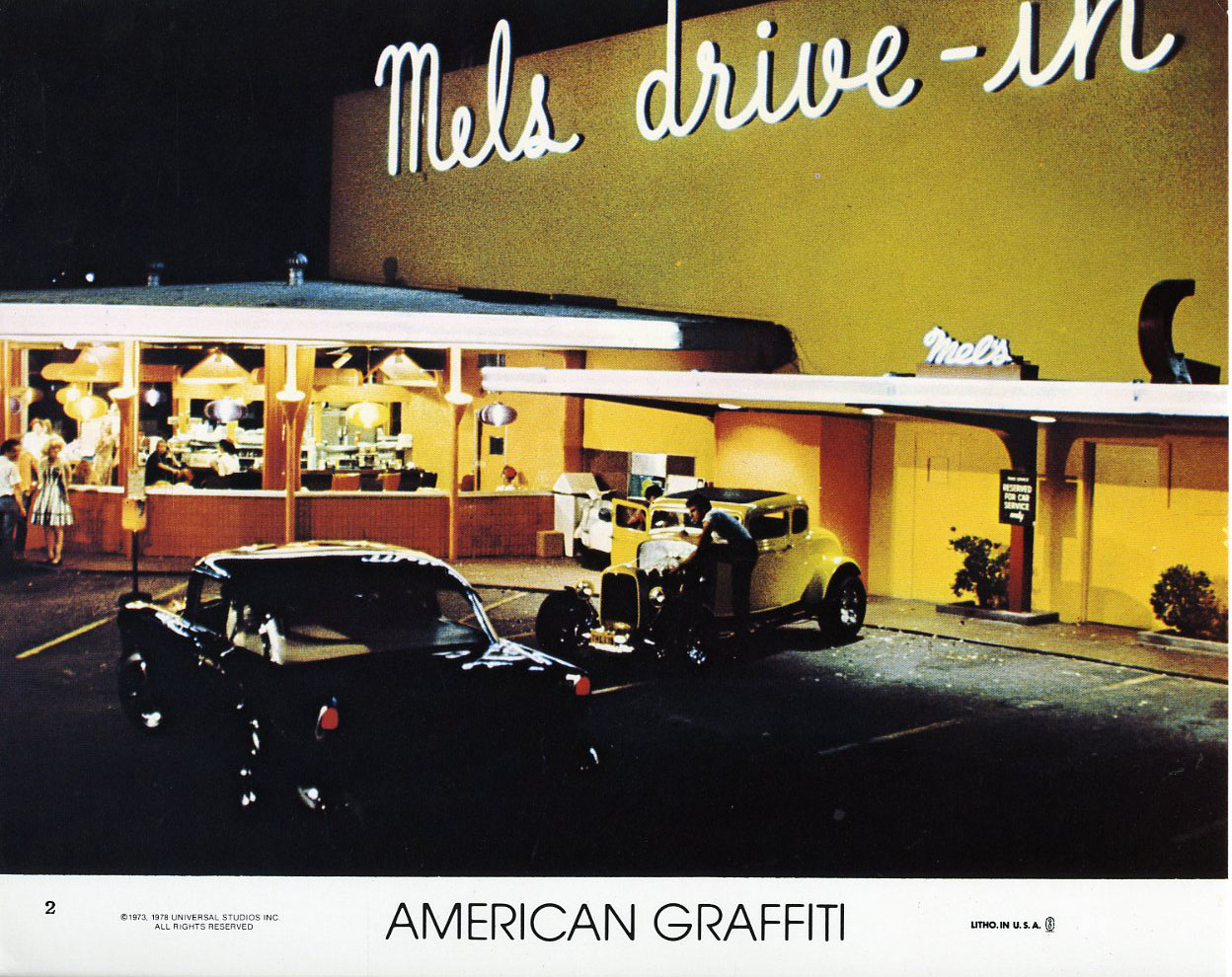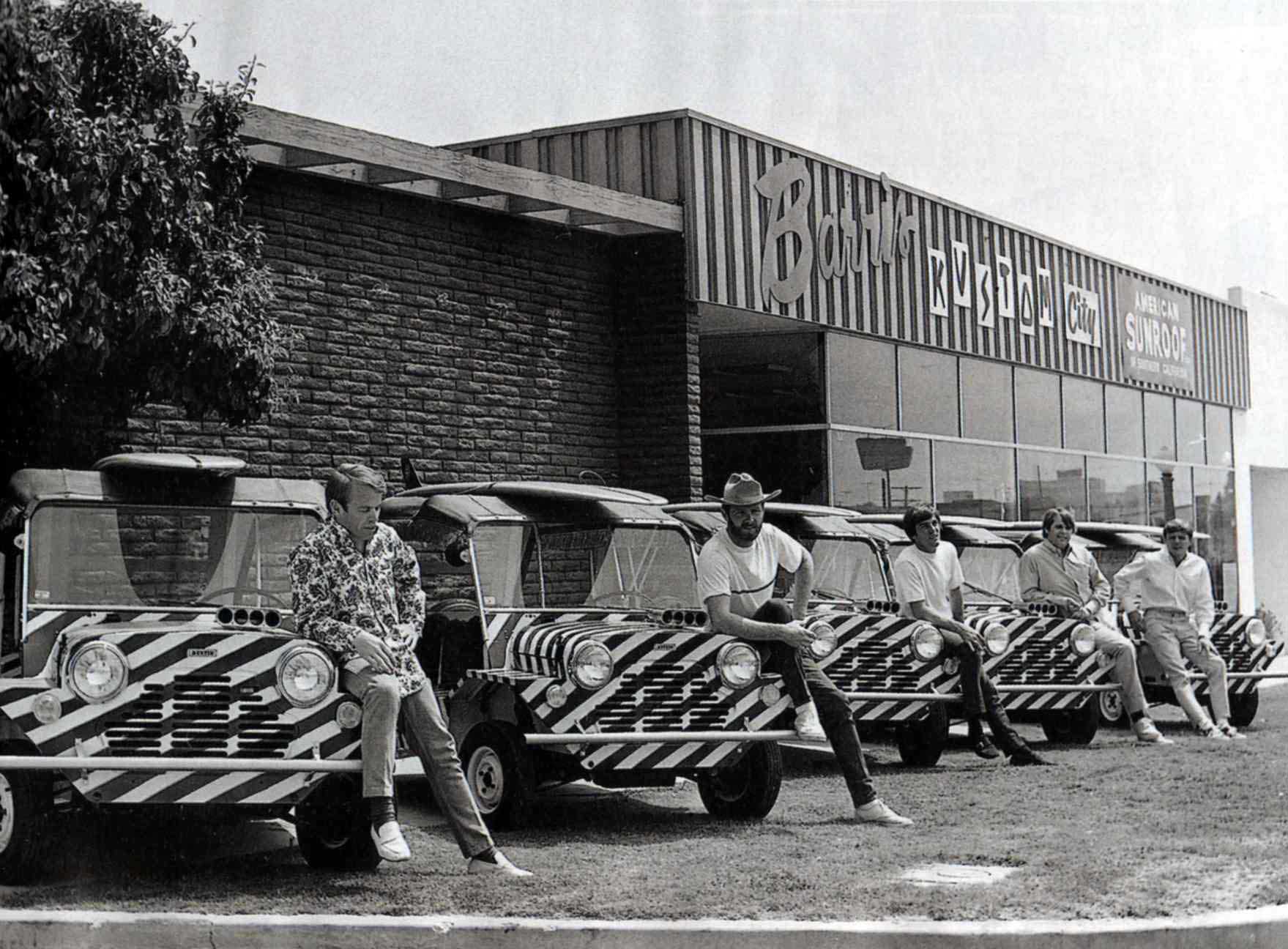" There’s been a lot of spooky stuff written over the half century that has passed since James Dean’s fatal car crash. Whichever way you choose to look at the glamorous cult of death surrounding the star of Rebel "

Kandy Koloured Dreams
Late last year I flew into Los Angeles to report a story on southern California’s unique, vibrant, influential car culture. Nearly half a century earlier a slightly more talented writer did the same thing. Tom Wolfe, who would go on to write The Right Stuff and Bonfire of the Vanities was 32 years old and on his first assignment for Esquire. His brief was pretty much the same as mine: go out there, meet the guys building these extraordinary-looking hot-rods and ask why kustom-kar kulture, as they like to spell it, took off in southern California and had such an impact on the wider culture, and whether the lumbering Detroit carmakers could learn from it.

Tom Wolfe is a character in America’s unfolding drama
It was a big deal for Wolfe. He panicked and got a terrible case of writer’s block and just typed all his notes out in a long memo to his editor, Byron Dobell, who’d arranged for someone else to write the story. But once Wolfe relaxed the easy, impressionistic style in which he wrote the notes made great reading. So Dobell just knocked the ‘Dear Byron’ off the top of the memo and ran the whole thing in the magazine. The story, The Kandy-Kolored Tangerine-flake Streamline Baby, is seen as one of the first examples of The New Journalism, even if Wolfe was panicking rather than consciously innovating as he wrote it, and it’s one of the best things ever written about cars. I have a copy of the original 1963 Esquire on my desk as I write this, but you can buy the story in the Wolfe anthology of the same name, and there are a few other car-related classics in there too.
I wasn’t trying to copy, outdo or update Wolfe’s piece. There’s no point. What he saw in ’63, I saw last year: the great hot-rod builders like the great artists in their studios, building cars of the most perfect stance and proportion for those who could afford them (not cheap), but staying outside the automotive mainstream, with the big carmakers paying attention and doing what they can to capture some of that automotive mojo, but never quite getting it.

Cars like this ‘surf woody’ helped cement the Barris legend
Counter-cultures don’t usually last fifty years, but this one has lasted even longer, and goes back to the end of the Second World War when GIs came home with a need for speed that the old Model A Fords they’d left behind couldn’t satisfy. That mixed with the nascent LA art scene and the racing on dry lake beds and illegal late-night public-road drag strips and the weather that encourages summer-night cruising to create the whole kustom kulture. It influenced so much: not just car design but journalism – not just Wolfe’s story, but half of America’s big mainstream and modded car mags grew out of Hot Rod magazine – and music – Brian Wilson and Little Deuce Coupe – and film. George Lucas’s first big flick, American Graffiti, is pretty much the perfect summation of that whole scene. Shot on a tight budget, it was riotously profitable and he wasted the proceeds on some flop called Star Wars.

Ed ‘Big Daddy’ Roth created a more monstrous myth than that of Barris
And astonishingly, the people haven’t changed either. George Barris has been at the chromed hub of Cali’s kustom kulture since before the GIs came home. He invented the name. Already, by the time Wolfe met him for his Esquire piece, he was “the biggest name in customizing”, and a “solid little guy, five feet seven, 37 years old, and he looks just like Picasso”. Wolfe liked the great artist analogy: Barris’s ascent, he said, was like “Tiepolo emerging from the studios of Venice, except that Barris emerged from the auto-body shops of Los Angeles”.

He was right to make the comparison. While the work of the other great hot-rod builders, like Alex Xydias and Pete Chapouris of the famous SoCal Speedshop focused on pure, perfect automotive form, Barris and Ed ‘Big Daddy’ Roth pushed on into art, their cars as much free-form scuplture as transport. Roth passed in 2001 but Barris’s vast canon of work now includes everything from subtle kustomizations for the Hollywood glitterati of the fifties to the Batmobile of the sixties and countless other movie cars. Detroit was paying attention, and still is. “I was amazed,” Barris told Wolfe in ’63 about his first trip to Detroit’s design studios. “They could tell me about cars I built in 1945. And all this time we thought they frowned on us.”

Celebrity hookups were Barris’s stock in trade
Artists like Barris and Roth could never go work for corporate behemoths, so instead the global car industry came to them: the biggest change since Wolfe’s story is that virtually every major carmaker now has a design studio in southern California, hoping that their hyper-edumacated young stylists will catch whatever it is that makes SoCal cars so great. Meanwhile Barris, at 86 looking like the well-aged pop star he is, keeps at it. To paraphrase William Shakespeare (if you haven’t heard of him, think of him as the George Barris of literature): “Age cannot wither him, nor kustom stale his infinite variety”…
CLICK TO ENLARGE










Great article, love the vintage photography. Great work.